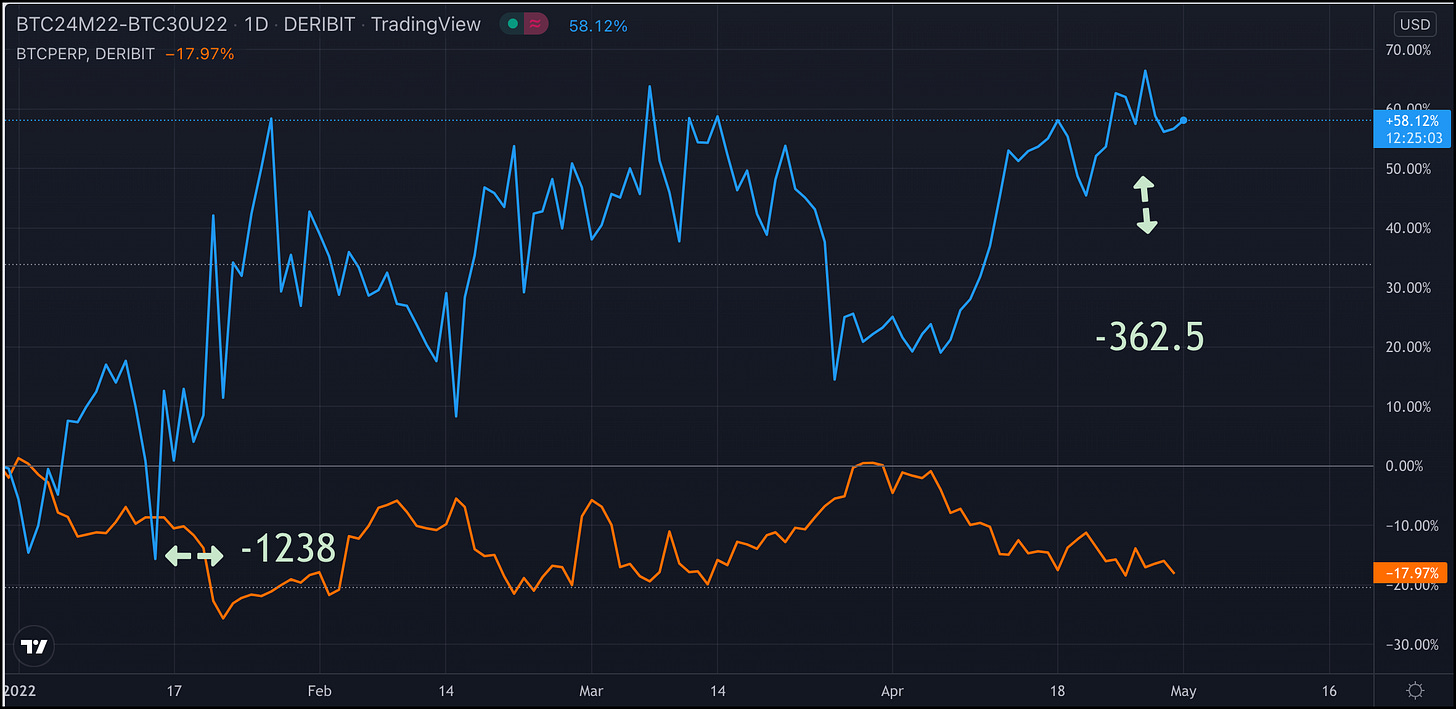About two months ago, I moved over to full-time crypto derivatives from full-time TradFi derivatives. I'm still learning, no doubt. Much to learn and much to do. There are certainly some areas in crypto that are head-scratchers, and that applies to trades that are common in crypto and trades that are missing.
One thing that somewhat surprises me in the full-bore crypto space is the immaturity of the futures spreads space, and you don't see or hear a great deal about it.
In TradFi, we read and heard a lot of chatter connected to the BTC futures spreads at CME Group. Plenty of thought pieces developed around how to best roll your exposure forward and what the futures curve was telling us. It was great, thought-provoking material. I look forward to that same level of analysis entering the crypto futures spread space. Perhaps it's already there. If you're writing about BTC & ETH futures spreads, let me know. I'd love to exchange some ideas.
The landscape is certainly different between TradFi and crypto spreads. Crypto-first exchanges don't support calendar spreads, making the roll a bit slippery. Paradigm solved that problem by introducing a Futures Spread Dashboard that provides for single click atomic execution of futures spreads at superior prices to what's seen at the exchanges, but that's not what this is about. I'm more interested in the opportunities that are available in crypto futures spreads.
The chart below highlights one opportunity that I suspect is often available. This trade is nothing more than buying the BTC June vs. BTC September futures at Deribit. It's a calendar spread. The numbers I have here may be a bit wonky. We're looking at these dated futures contacts at the first of the year...about six and nine months before they expire. Liquidity may have been limited for deferred contracts in early January, but odds are, you could have found a market.
I'm getting at the vast difference in return between the spread and perpetual futures. Then Jun/Sep spread has rallied about 3.5x trough to peak. Perpetual futures are down for the year and haven't done a lot, range-wise.
Calendar spreads tend to rally. The deferred contracts trade at a premium to the near contracts for a typical futures curve. They're in contango. That deferred premium tends to melt away over time; thus, the calendar spread tends to rally.
Sure, a bunch of math can be done to quantify the trade, find fair value, understand timing, etc., but the trade is there. Why aren't we hearing more about it?
Discussion about this post
No posts




